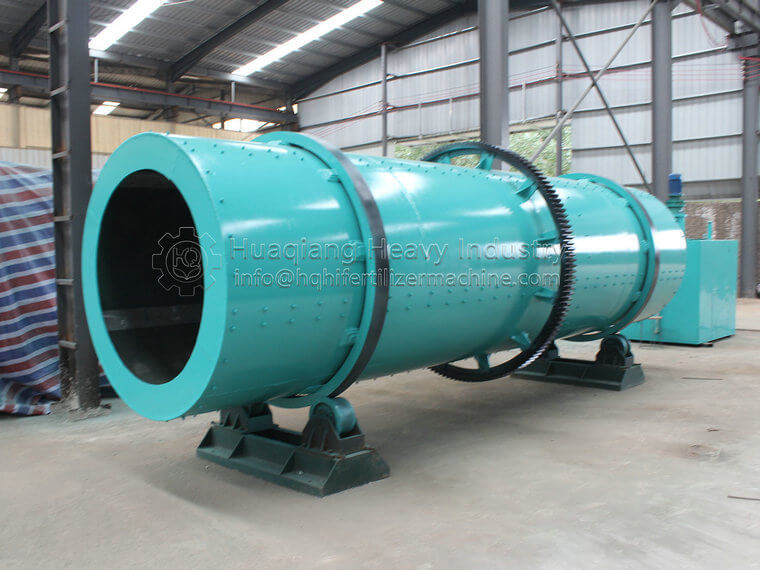Organic fertilizer granulator is one of the most core equipment in organic fertilizer material equipment, which has a direct impact on the quality of organic fertilizer particles (roundness, uniformity, fertilizer moisture retention performance, etc.). Different granulation processes for organic fertilizers require different types of granulators, which directly affect the yield, quality, appearance, price, and other aspects of the product. It can be said that the organic fertilizer granulator is the core of the entire production line.
The working principle of the drum granulator is that the main motor drives the belt and pulley, which are transmitted to the driving shaft through a reducer. The split gear installed on the driving shaft engages with the large gear ring fixed on the machine body and works in opposite directions. The material is added from the feeding end and passes through the inside of the cylinder. Through the special structure inside the cylinder, it is made into particles and finally flows out through the discharge port. Due to the continuous entry of materials and the continuous rotation of the granulator, mass production can be achieved.
The drum granulator is equipped with steam, gas ammonia, or the addition of phosphoric acid or nitrogen solution, phosphorus ammonia slurry, and heavy calcium slurry to complete the chemical reaction and heating process of compound fertilizer granulation in the cylinder; Alternatively, in the cold granulation process of adding a small amount of water to the compound fertilizer, the materials that need to be granulated are moved through the cylinder, causing rolling and rotation when there is no material in the cylinder, and then agglomerated into balls under appropriate humidity and temperature to complete the granulation process.
Characteristics of drum granulator:
1. The ball forming rate reaches 70%, with a small amount of returned material, which has a small particle size and can be re granulated;
2. Inject steam for heating, increase the temperature of the material, reduce the moisture content of the material after balling, and improve the drying efficiency;
3. Using rubber engineering plastic as the inner lining, the raw material is not easy to stick to the cylinder and plays a role in anti-corrosion and insulation;
4. Large production capacity, low power consumption, and low maintenance costs.